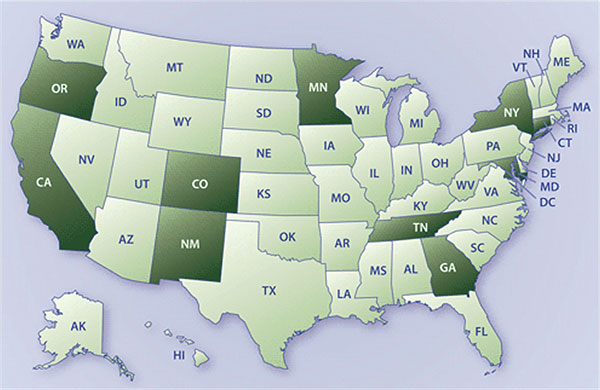Volume 21, Number 9—September 2015
THEME ISSUE
Emerging Infections Program
Emerging Infections Program
Cultivation of an Adaptive Domestic Network for Surveillance and Evaluation of Emerging Infections
Figure 2

Figure 2. The Emerging Infections Program (EIP) and its key partnerships, United States. Dark shading indicates locations of EIP sites (year established are indicated in parentheses). Minnesota: Department of Health, St. Paul, and Association of Professionals in Health Control, St. Paul (1995); Oregon: Oregon Public Health Division, Portland, and Oregon Health Sciences University, Portland (1995); California: Department of Public Health, Sacramento, and University of California School of Public Health, Berkeley (1995); Colorado: Department of Public Health and Environment, Denver, and University of Colorado Health Sciences Center, Denver (2000); New Mexico: Department of Health, Santa Fe, and University of New Mexico Indian Health Service, Albuquerque (2002); New York: Department of Health, New York, and University of Rochester, Rochester (1997); Connecticut: Department of Public Health, Hartford, and Yale University School of Public Health, New Haven; Maryland: Department of Health and Mental Hygiene, Baltimore, University of Maryland, College Park, and Johns Hopkins University, Baltimore (1997); Tennessee: Department of Health, Nashville, and Vanderbilt University, Nashville (1999); Georgia: Department of Public Health, Atlanta, Emory University School of Medicine, Atlanta, and Atlanta Veterans Administration Medical Center, Atlanta.